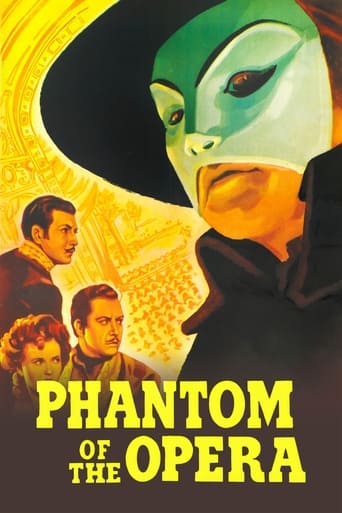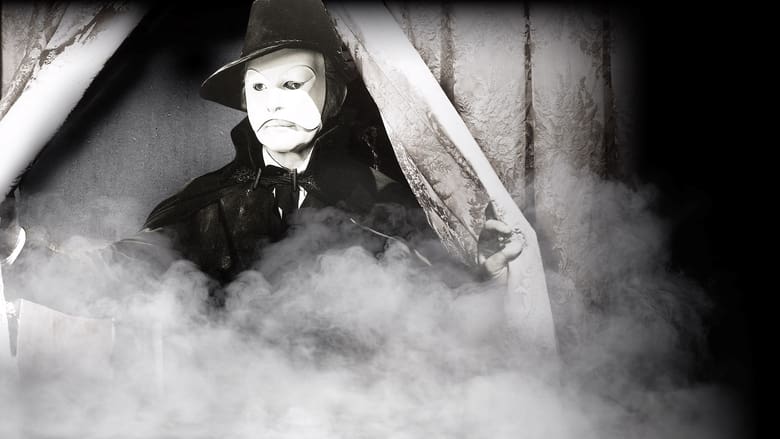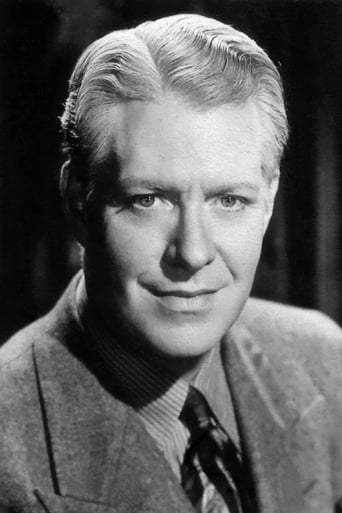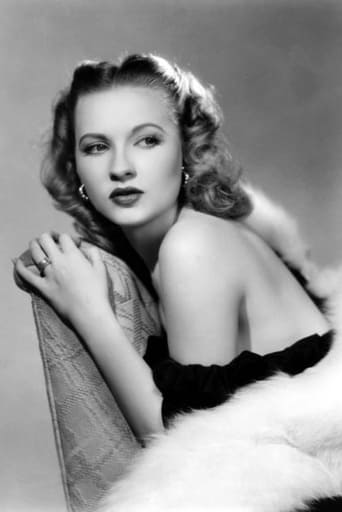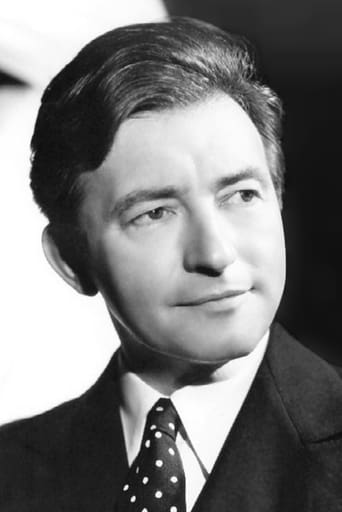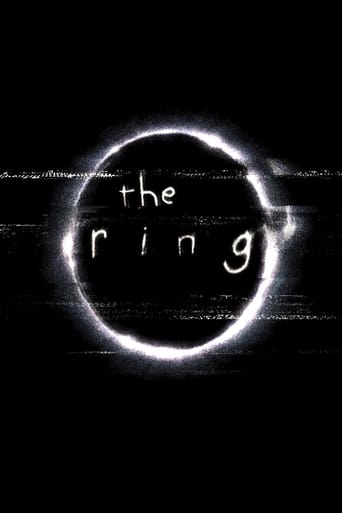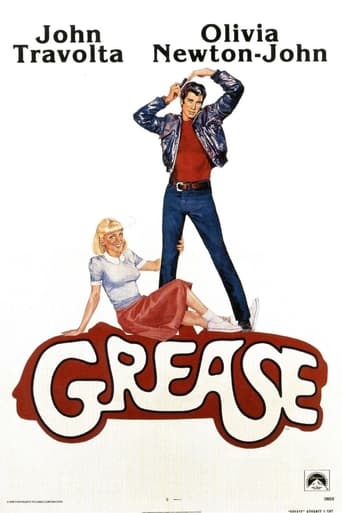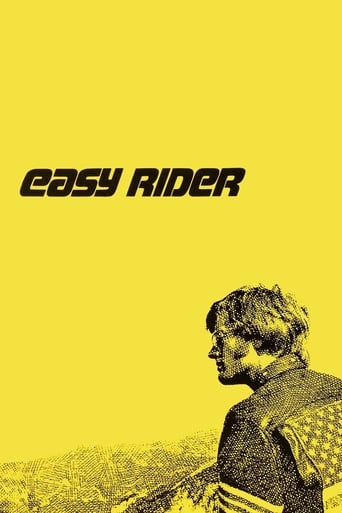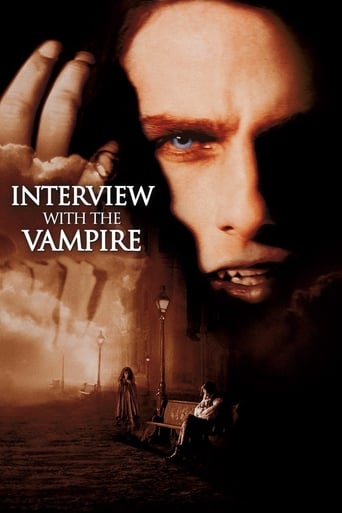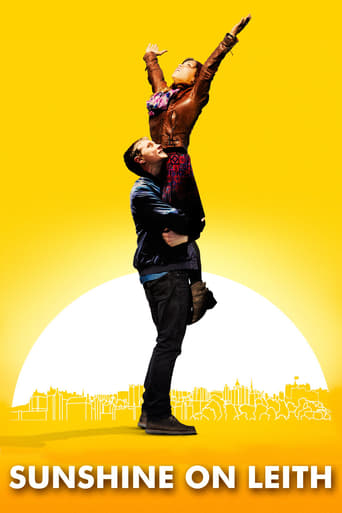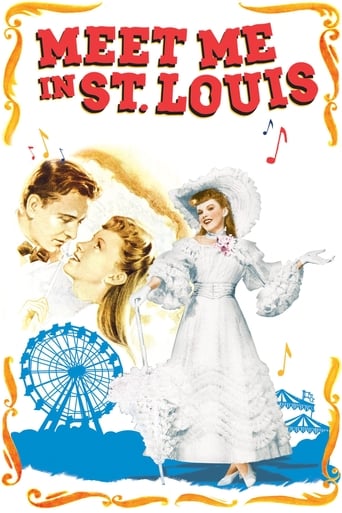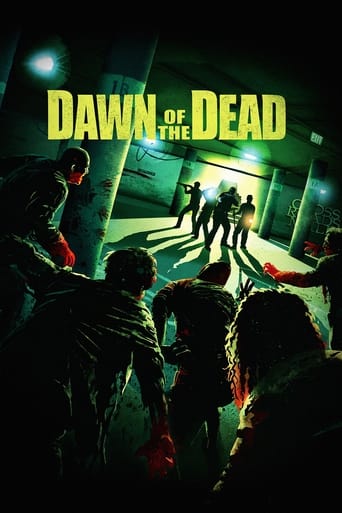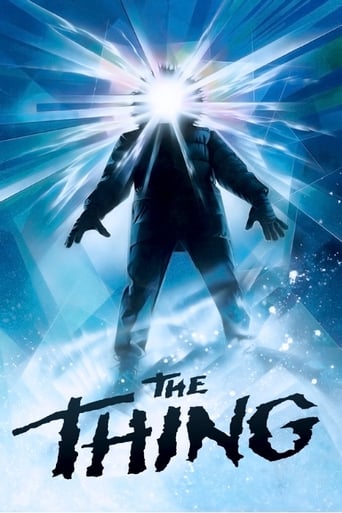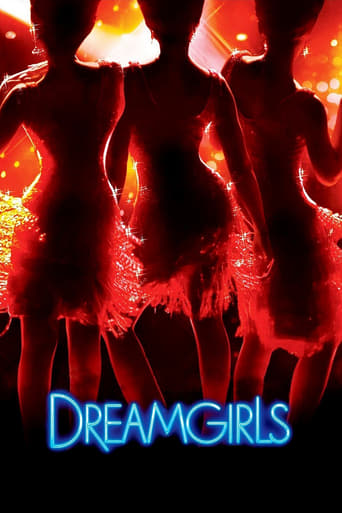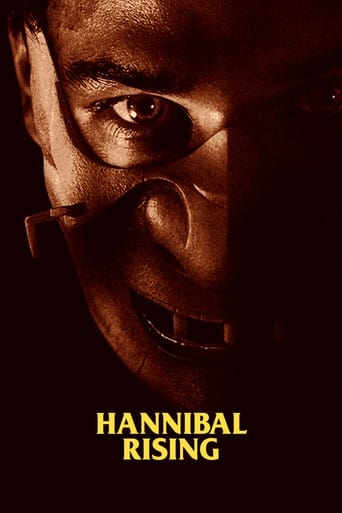Phantom of the Opera (1943)
Following a tragic accident that leaves him disfigured, crazed composer Erique Claudin transformed into a masked phantom who schemes to make beautiful young soprano Christine Dubois the star of the opera and wreak revenge on those who stole his music.
Watch Trailer
Cast


Similar titles
Reviews
So much average
Great movie! If you want to be entertained and have a few good laughs, see this movie. The music is also very good,
All of these films share one commonality, that being a kind of emotional center that humanizes a cast of monsters.
Let me be very fair here, this is not the best movie in my opinion. But, this movie is fun, it has purpose and is very enjoyable to watch.
(Please see Part Two upon completion, maybe even Part Three, as there's a lot to cover!)In 1947/48, I was 8/9 years of age, and we were all doing a lot of Arabian Nights reading. Suddenly, the RKO Greenpoint had a Monday-Tuesday double bill (revivals, I later learned), the prime film for us being ALI BABA AND THE FORTY THIEVES. Who knew such a thing existed, since we were only 3 or 4 when it had come out? So, at least in my case, I went to see it (probably for $.12). The visit literally changed my life! Big statement? Read on. The other film with ALI BABA was THE PHANTOM OF THE OPERA, and I had no idea what either a phantom or an opera was. Well, when I got home that night, all I could talk about was that second feature. ALI BABA was okay, but PHANTOM? I was just overwhelmed with it and by it. I still am. I learned who Claude Rains was, I heard gorgeous music (classical, but I didn't quite know it then), and practically hid under the seat for the Phantom's unmasking. I went to see the double bill again the next day, and then started a process that was to go on until I was at least out of high school, of following PHANTOM around the various Greenpoint and Williamsburg theaters, and even to Manhattan, going to see it wherever it played. In the course of doing so, I saw terrific co-features like DESTRY RIDES AGAIN and THE SPANISH MAIN, but they really didn't matter. It was PHANTOM and only PHANTOM that mattered. Rains became my favorite actor (he still is), and as I started to listen to classical music on the radio, little by little I learned what at least some of the music heard in the film had consisted of, most especially Chopin's First Polonaise and his most famous Nocturne, and then Tchaikovsky's Fourth Symphony. Regarding the latter, after hearing it on the radio and with my birthday coming up, I told my folks I wanted a recording of that symphony, and Mom went out and found one right here in North Brooklyn, a Columbia five-record 78 set by Dmitri Mitropoulos and the Minneapolis Orchestra. I must have played it 250 times (poor Mom - Dad worked nights). Amazingly enough, while all of the melodies from the film permeated my being (almost all classical music seemed to do so), I was totally indifferent to the singing of Eddy and Foster. Singing would remain something of a blind spot with me until I hit 12 and saw THE GREAT CARUSO, at which time the world opened up to me in a manner previously unexpected. Today, my collection includes some 70,000 recordings (78s, 45s, LPs and CDs), 95% of them classical vocal, not to mention over 26,000 films, and I am a well-known collector and "expert" on the history of singing as vouchsafed to us by the recording medium, and I am still impressed just enough by my memories of my 12-and-younger life to know, repeat KNOW, that the rest of this very enjoyable life I have led would never have come to pass without my exposure, at exactly the right time, to both THE PHANTOM OF THE OPERA and THE GREAT CARUSOThe above is a pretty long preamble to my main reason for writing this review here - as a defense of this 1943 THE PHANTOM OF THE OPERA, which I have long heard condescended to by film critics, horror movie lovers, musicians, people who don't know as much as they think they do in the areas of both movies and music, and (unfortunately) snobs. I have read all 83 reviews put up here, and some of them seem to understand the unique reasons to love this film, while others don't. I will not find fault with individual reviews, but I have noted a great many areas of agreement of why it is a great movie, but many more areas of condemnation of it, which I propose to address now, subject by subject. A full reading of what follows may give you nothing, but I am hoping it will enlighten viewers as to why the vast majority of negative reviews are either ill-informed, mark non-judicious understanding of films, social conditions, etc. of 75 years ago, or may be simply deficient in knowledge of music, singing, and most importantly, the narrative structure of the film which quite literally demands every moment devoted to operatic music and/or scenes included in this movie. 1. There are many complaints, both here and in books on the history of the horror film, that in this one, there is simply too much music and not enough horror. However, this is not a horror film, no more than the 1925 version was a horror film, nor anymore than the Gaston Leroux novel was a horror story. The novel was what we now call a "thriller" and so are these first two movies based on it. (We will not concern ourselves here with subsequent film versions.) Look at the original story, of an unfortunate man who is born with a skull for a face and who, before the novel ends, has set up a plan to blow up all of Paris if his wishes are not acceded to. That is almost the definition of a thriller, not a horror story. Oh, the face is horrific enough, especially in the Chaney film version, but there is little else of horror in it, and much of the thriller throughout. This 1943 version eschews almost all the 'horror' except how the Phantom gets to look that way, and doesn't address any of the Phantom's grandiose plans outside of what takes place within the opera house. The murders of the publisher, the two women in the dressing room, and a policeman are the only individual ones in the movie (the chandelier incident is something else), but with all the deaths, only one of them is actually seen from beginning to end, that of the publisher. Those are hardly the makings of a 'horror' film. So, for the time being at least, bear with me in my assertion that we are watching a thriller here.2. There are many complaints that this film doesn't follow, even that it has precious little to do with, the original Leroux story. (The 1925 version is closer, but hardly faithful, to Leroux.) So what? The two other great Universal horror films that precede this one and that are based on outside novels, and that everyone seems to want to drag in, are FRANKENSTEIN and DRACULA, and those two films are so divorced from their original sources as to be almost unrecognizable. FRANKENSTEIN, written in 1816, is brought up to 1930, and in the movie the Monster does not gain speech by observing a loving family while in hiding nor does he narrate any part of his own story, Victor's bride is not murdered on her wedding day, there is no chase to northern climes and the Monster does not end up floating off on an ice floe in a kind of depressed suicide; there are no characters in the book even vaguely resembling Fritz and Baron Frankenstein, for no good reason "Victor" is changed to "Henry", Henry and his lady love enjoy a happy ending, etc. If anything, the book is near tragical in storyline and effect and is as much a thriller as a horror story (people travel vast distances in it); the movie is a great one, but has little to do with its source material. The film DRACULA is even worse after its opening 15 minutes or so. Except for the performances, it is not anywhere near being great by any stretch of the imagination, and the entire movie, based on a stage play adapted from the novel, is not only static visually, but almost eschews the entire narrative line of Stoker's DRACULA. The Stoker novel is really a thriller, the second part of it almost a "chase novel" as ALL of the admirable people in it travel halfway across Europe from England, by rail, stagecoach, boat, etc. in a frantic effort to reach Transylvania and Castle Dracula before the Count, whose coffin is traveling its own separate route to the same destination, can get there, all knowing full well that if they fail it may cost Mina Harker her life and soul, with perhaps the same effect on the brave men taking on the Count. And Mina is part of her own defense network, not the simpering heroine of the 1930 film. How dare anyone call into question the changes from novel to film in PHANTOM by bringing up FRANKENSTEIN and DRACULA? Either they have never read the three novels or they are just reflecting received wisdom! 3. Claim: What little horror there is in the 1943 PHANTOM comes with Claudin's unmasking, and that is a terribly disappointing thing in this film. Maybe in 2018 it is, but in 1943 it was surely more than horrifying enough. Think about it. What horror film have you seen from before 1956, especially in Technicolor, that shows even a drop of blood, let alone anything approaching true visual horror? When Hammer made THE CURSE OF FRANKENSTEIN in 1956, I can remember audiences kind of tittering uneasily and then some self-conscious laughs breaking out when Peter Cushing's good doctor did nothing more than bring his bloody hands up from an unseen table and wipe them on his doctor's smock. Nothing like that had been seen before. We know that Claudin's face has been disfigured by acid, but we don't know the extent of the damage. When we see him in close-up, with a mask that could just as easily belong to Zorro as to the Phantom, it doesn't seem to be all that bad. Then, when Christine tears the mask off his face under the Paris Opera, we see that only about half of his face has been destroyed by the acid, but the make-up is phenomenally perfect to indicate the seriousness (and what must have been the agony) of those burns. Things like that were not shown in 1943; they simply weren't. Search your memory and remember even one. And as I saw that film over and over again into my teens, I can assure readers that everybody in those audiences let out one big scream as the face appeared in close-up on the big screen, part of the effect due to the anticipation caused by the build-up of the music and Christine's singing of it as her hand edges closer and closer to the mask. Today, children are watching kiddie shows and movies with monsters that would have made those we used to see in TALES OF THE CRYPT comic books look like Roy Rogers and Gene Autry. But In 1943, that face was overwhelmingly horrifying.
I can't help but compare this to Chaney's silent classic, and it just plain doesn't hold up. Completely lacking in the Gothic, macabre visuals of that one, it instead leans into the phantom's romantic origin story, and it's just not that engaging. The tone is all over the place, with a few cool moments of tension breaking the doldrums (chandelier, use of shadow).
Being a great fan of Gaston Leroux's original novel, the 1925 silent version of The Phantom of the Opera with Lon Chaney is one of my favorite films. The only thing missing is the sound. So when I got the chance, I viewed this 1943 adaptation with Claude Rains, expecting it to be fairly good, with a star like him in the lead. Instead, I found it confusing and disappointing. I hate when screenwriters feel the need to justify their existence by rewriting a story that is already fine as it is. The film bears little resemblance to the book, with insipid subplots and overly-long scenes of invented operas taking up the bulk of the story (apparently, the film makers couldn't secure rights to well-known operas, which explains the absence of the vitally important excerpts from Faust). Because of this, the film becomes a showcase for sound and Technicolor, not the magnificent Gothic Horror/Mystery story that Leroux imagined. It isn't mysterious or romantic, just a mixed bag of silly characters and a meandering plot that is much too predictable.The one redeeming quality of this film is Claude Rains as the titular character. The few brief moments he is on screen, he gives a beautiful portrayal of a tragic genius driven to murder for the woman he loves--the only problem is, you don't see him enough! Rains is an excellent actor, but isn't given the chance to become a really great Phantom due to his lack of screen time and the significant changes made to the plot. You see his character before he becomes the Phantom, which robs the viewer of feeling any tension of wondering who this cloaked figure is, something that was almost overwhelming in the silent version; and after that, he becomes almost a secondary character to Susanna Foster as Christine and her two (two!) adversarial suitors, whose incessant squabbling add nothing to the plot. He is given a few scenes of passion, but they are mostly toward the end, and due to the fact that in this story, he becomes disfigured by an accident and not born with his deformity, his aching for love and acceptance is far less compelling.Do yourself a favor, and go out and watch the Lon Chaney version instead. It stays much closer to the original story and is highly watchable, despite its age. This film, not so much.
This 1943 film of Phantom of the Opera has much to like, but also has a lot wrong. Far from a bad film but underwhelming as well considering the talent involved, for fans of opera and visually beautiful films this is for you, for horror fans and purists not so much. Before getting on the many things good about Phantom of the Opera there are things that did let things down. The pacing is plodding too often, not helped by direction that was very skillful but lacking urgency. The comedy scenes vary in effectiveness- too much of it was not very funny really- and would feel much more at home in an Abbott and Costello film, the type of humour did feel out of place here for a story that is essentially a horror drama based on a disfigured man and opera.Nelson Eddy was a wonderful singer, with handsome looks and a nice personal charm but his acting is wooden here, even more so than his performance in Naughty Marietta. And the horror is under-utilised and significantly diluted. The scariest it gets is the phantom's entrance, the death scenes are somewhat silly, with a lack of tense atmosphere and build-ups, and the phantom's face reveal is not shocking enough, even Foster didn't look that shocked.For all the film's problems though, you can't still dismiss it entirely. The lavish production values are just gorgeous to look at and in producing them there is nothing overblown or over-produced about them. It's beautifully shot and filmed as well. The music is sublime too,- then again you are talking to a massive classical music and opera enthusiast who'd if she wanted to would spend hours talking about music, operas and performers she loves- the opera scenes are crucial to the story and are sung, produced and choreographed with so much brio and attention to detail. There are even orchestral pieces like Tchaikovsky's Symphony no.4 adapted into song, that was interesting to hear.Suzanne Foster is beguiling in every single way, and Nelson Eddy gives some of his best ever singing here.(and this is coming from someone who is a big fan of his voice, quite possibly the most beautiful baritone voice on film with Howard Keel too a very close contender). Phantom's entrance and the chandelier scene are very effective, the dialogue is serviceable at the least and some of the romance is sweet. Phantom's back-story was interesting and moving, though it is very understandable why there'd be those who prefer him more ambiguous. Aside from the production values, the best aspect is the subtly menacing yet movingly sympathetic performance of Claude Rains, a really wonderful performance from a screen icon that deserved a better film.Overall, a film of pluses and minuses where either point of view(love or hate, also like, don't care for and mixed feelings) is understandable. 6/10 Bethany Cox

